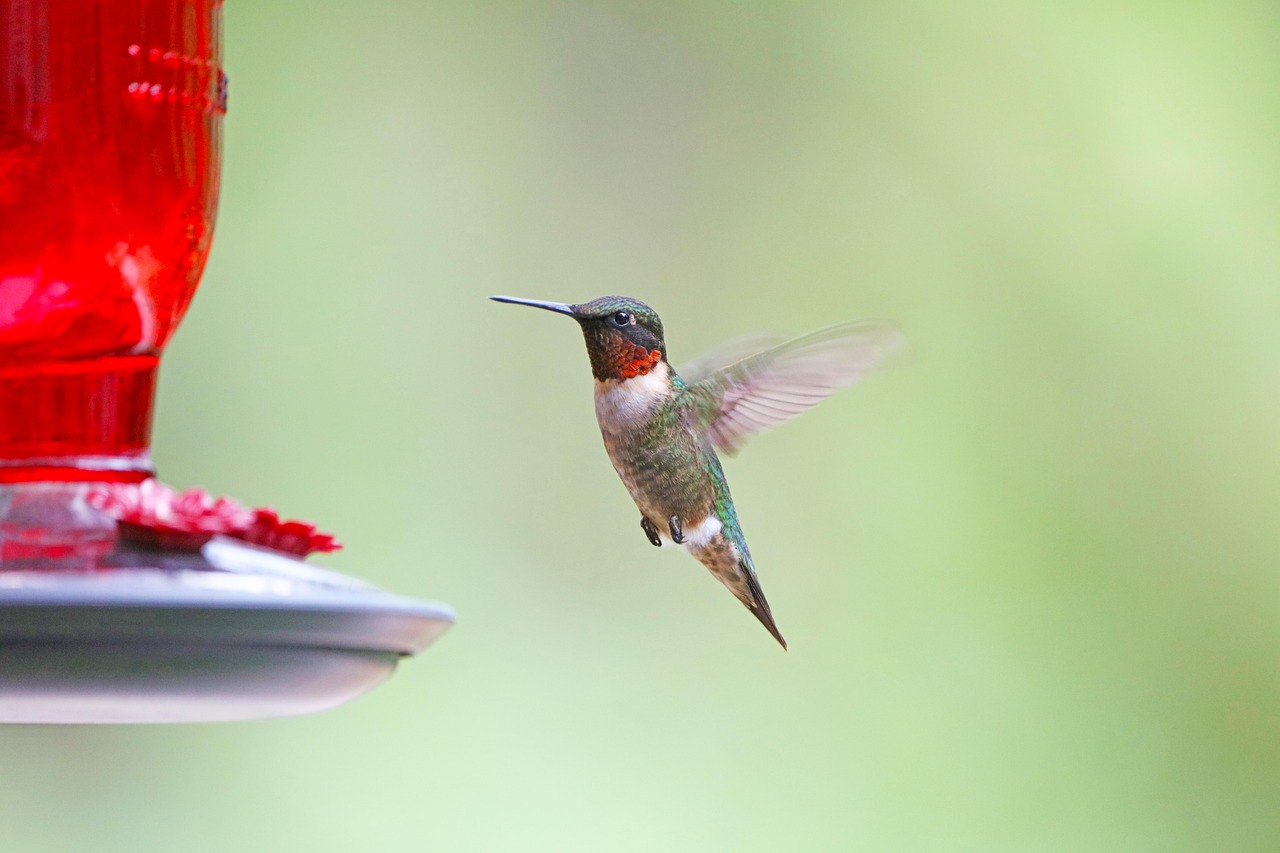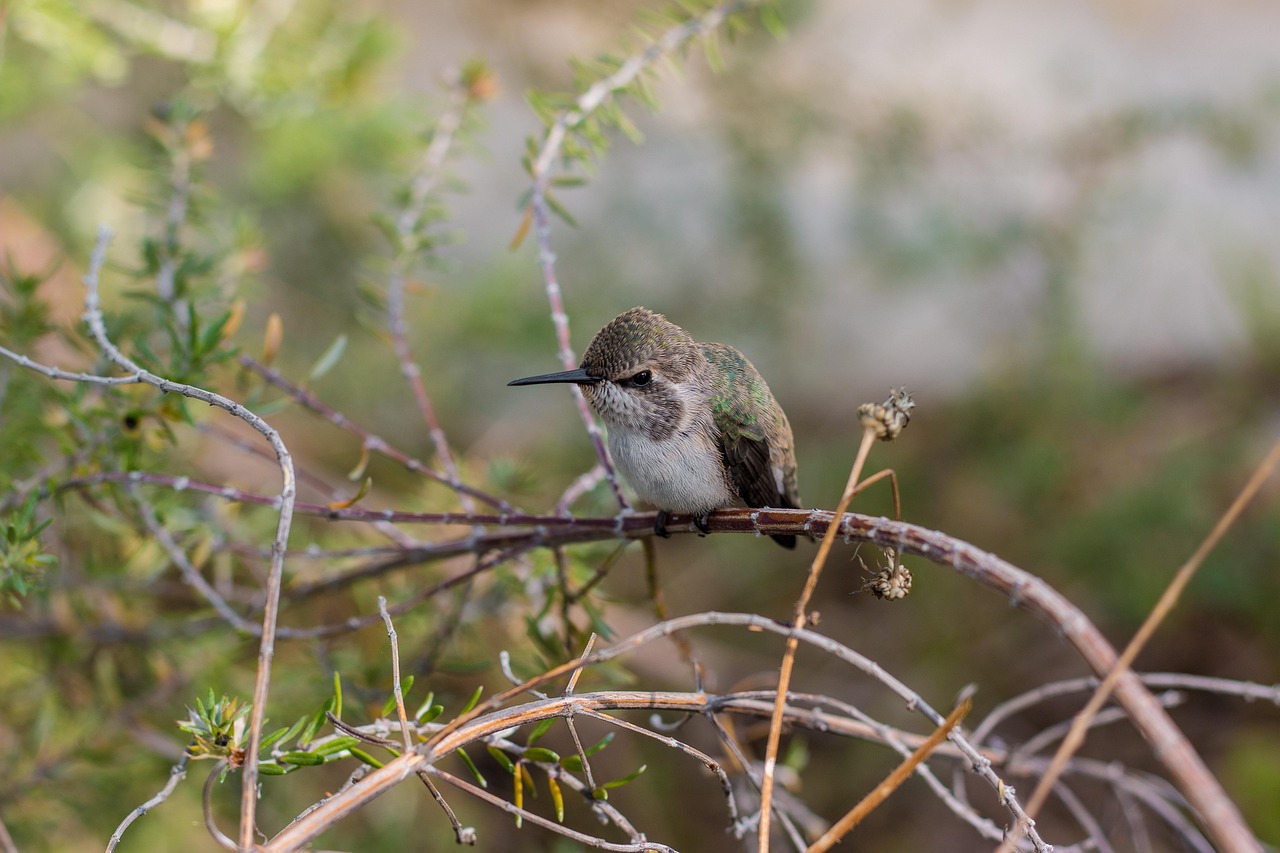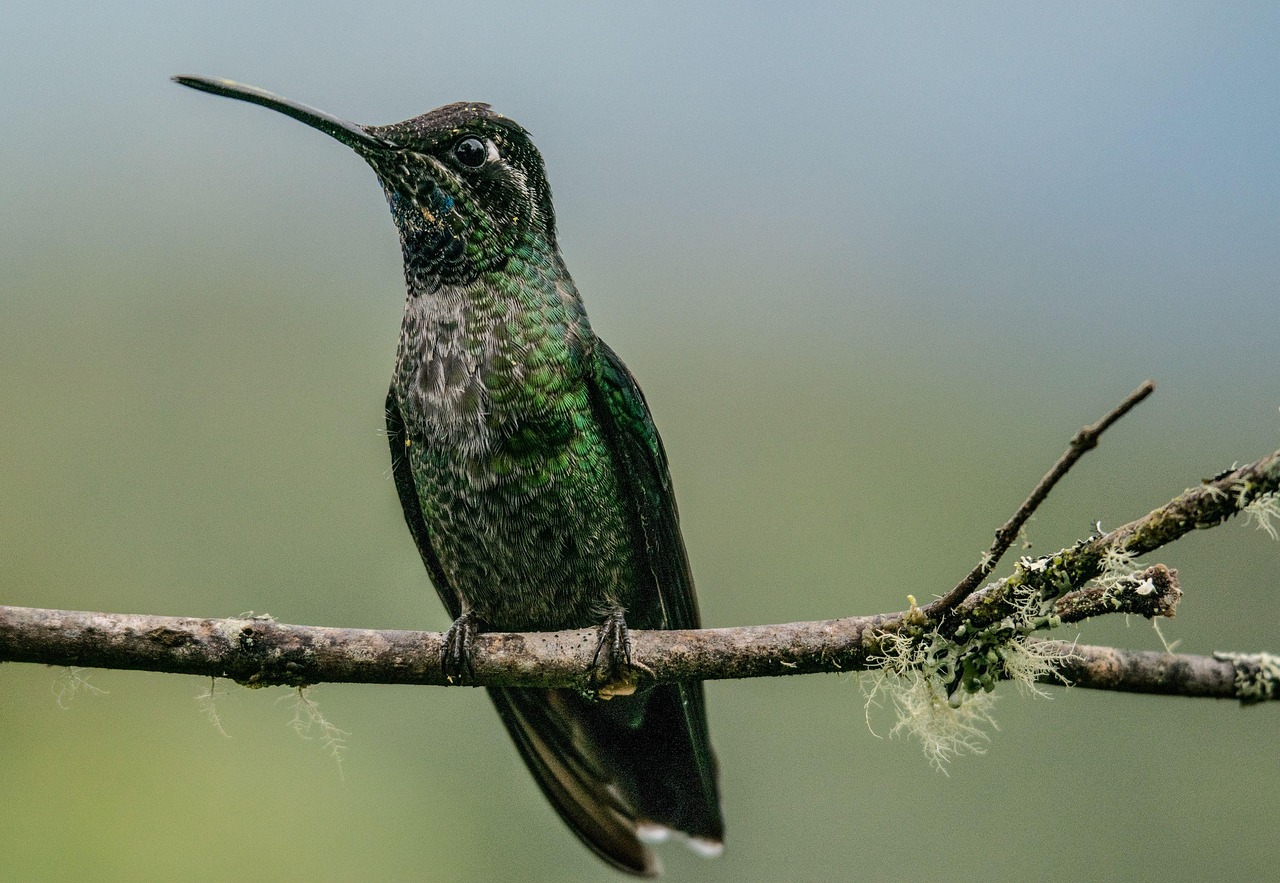Hummingbirds can hover due to their unique wing structure and specialized aerodynamics. Their wings are capable of rotating 180 degrees at the shoulder, allowing for rapid upward and downward strokes. This ability creates lift in both directions, enabling them to maintain a stationary position in the air.
The Unique Anatomy of Hummingbird Wings

Hummingbirds possess a distinct wing structure that sets them apart from other bird species. Their wings are relatively long and narrow, which facilitates swift movements and agility. The wing muscles are finely tuned, providing the precise control needed for hovering. Unlike most birds, hummingbirds can rotate their wings not only up and down but also forward and backward. This motion is crucial for their hovering ability.
The shoulder joint of a hummingbird is highly flexible, allowing for this remarkable wing rotation. The entire wingbeat cycle consists of two main phases: the downstroke and the upstroke. During the downstroke, the wings create lift as they push against the air. The unique rotation during the upstroke further enhances lift, creating a continuous flow of air beneath the wings.
Aerodynamics of Hovering
The aerodynamics involved in hummingbird hovering is fascinating. When a hummingbird hovers, it must generate enough lift to counteract its weight. The combination of rapid wing beats and the ability to manipulate airflow allows these birds to remain airborne without moving horizontally. This is achieved through a phenomenon known as “unsteady aerodynamics.” Unlike steady flight, unsteady flight involves changes in air pressure and airflow around the wings.
As a hummingbird flaps its wings rapidly, it generates vortices—swirling air currents—that enhance lift. These vortices are created during both the downstroke and upstroke. The interaction between the wings and these vortices is what allows hummingbirds to hover effectively. The ability to change the angle of attack on their wings also contributes to their mastery of hovering.
Key Facts about Hummingbird Flight
| Fact | Description |
|---|---|
| Wingbeat Frequency | Hummingbirds can flap their wings between 50 to 80 times per second, depending on the species. |
| Weight Support | They can support their body weight in a stationary position by generating lift through dynamic wing movements. |
| Energy Consumption | Hovering requires significant energy, often leading to high metabolic rates in these birds. |
| Adaptability | Different species have adapted their wing structures and flight patterns based on environmental needs. |
The high energy cost of hovering means that hummingbirds must frequently feed on nectar to sustain their energy levels. Their exceptional hovering ability also enables them to access flowers that are out of reach for many other pollinators. This relationship between hummingbirds and flowering plants highlights their critical role in ecosystems as pollinators.
Understanding the mechanics behind hummingbird flight not only reveals the intricacies of their anatomy but also provides insights into evolutionary adaptations. Their unique capabilities have made them one of nature’s most fascinating aerial acrobats, capable of feats that challenge our understanding of flight dynamics.
Mechanics of Hummingbird Flight
The mechanics of hummingbird flight are a complex interplay of physical principles and biological structures. Understanding how they achieve such remarkable feats involves examining their muscle structure, wing movement, and energy management. Each aspect contributes to their ability to hover, dart, and maneuver with incredible precision.
Muscle Structure and Function
The flight muscles of hummingbirds are among the most powerful in the animal kingdom, relative to their body size. They possess two primary muscle groups that play crucial roles in wing movement:
- Supracoracoideus Muscle: This muscle is responsible for the upstroke of the wing. It allows the bird to lift its wings against gravity, creating the necessary lift during hovering.
- Pectoralis Muscle: This is the larger muscle group that powers the downstroke. It provides the force needed for generating lift and thrust during flight.
The coordination between these muscles is exceptional. The rapid contraction and relaxation cycles allow for a quick wingbeat frequency, enabling hummingbirds to hover effortlessly. The remarkable strength-to-weight ratio of these muscles is vital for sustaining their high-energy flight patterns.
Wing Movement Patterns
Hummingbirds exhibit unique wing movement patterns that facilitate hovering and agile flight. The primary movements can be categorized into three types:
- Figure Eight Motion: Hummingbirds often flap their wings in a figure-eight pattern, which effectively generates lift in both the upstroke and downstroke. This motion creates a continuous flow of air over their wings.
- Variable Angle of Attack: By changing the angle at which their wings meet the air, hummingbirds can manipulate lift and thrust. This adaptability allows them to hover in place or move in any direction swiftly.
- Wing Rotation: The ability to rotate their wings at the shoulder joint allows for greater control over airflow, which enhances lift during hovering.
These intricate movements work in harmony to enable hummingbirds to perform aerial maneuvers that are unmatched by most other birds. Their agility allows them to evade predators and navigate through complex environments while feeding on nectar.
Energy Management in Hummingbirds
Due to the high energy demands of hovering flight, hummingbirds have developed specialized mechanisms for managing their energy resources effectively. Their unique adaptations include:
- High Metabolism: Hummingbirds possess one of the highest metabolic rates among vertebrates. To sustain their energy levels, they must consume large quantities of nectar daily.
- Nectar Consumption: A hummingbird’s diet is primarily composed of nectar, which provides the necessary sugars for quick energy. They can consume up to twice their body weight in nectar each day.
- Fat Storage: During times of abundance, hummingbirds will store fat reserves that can fuel prolonged flights or periods when food sources are scarce.
This efficient energy management system is crucial for their survival, especially during migration or when competing with other pollinators for food resources. Hummingbirds have developed a keen ability to locate and remember flower locations, which aids them in maximizing their feeding efficiency.
Adaptations for Survival
The adaptations seen in hummingbirds extend beyond just flight mechanics. They have evolved several features that enhance their survival in various environments:
- Color Vision: Hummingbirds have excellent color vision, enabling them to identify flowers that are rich in nectar. Their perception of ultraviolet light helps them locate food sources more effectively.
- Body Temperature Regulation: These birds can enter a state of torpor during cold nights or when food is scarce. This physiological adaptation significantly lowers their metabolic rate and conserves energy.
- Rapid Reflexes: Their quick reflexes allow them to respond instantly to threats or changes in their environment, a critical trait for avoiding predators.
Overall, these adaptations not only support their unique flying abilities but also contribute to their resilience as a species in diverse habitats across the Americas.

Comparative Anatomy: Hummingbirds vs. Other Birds

To fully appreciate the unique capabilities of hummingbirds, it’s insightful to compare their anatomy and flight mechanics with those of other bird species. While many birds exhibit remarkable flight abilities, hummingbirds possess specialized adaptations that enable them to hover with precision.
Wing Structure Differences
One of the most significant differences between hummingbirds and other birds lies in their wing structure. Most birds have wings designed for gliding or flapping flight with a fixed range of motion. In contrast, hummingbird wings are:
- Shorter and More Flexible: Hummingbird wings are shorter relative to their body size compared to other birds, allowing for greater maneuverability.
- Rotational Capability: The unique ability to rotate their wings at the shoulder joint enables hummingbirds to change the angle of attack dynamically, enhancing their hovering ability.
- High Aspect Ratio: Hummingbird wings have a high aspect ratio, meaning they are long and narrow. This design is ideal for rapid flapping and efficient lift generation.
This flexibility and adaptability in wing structure set hummingbirds apart from larger birds such as eagles or sparrows, which rely on different flight strategies like soaring or gliding.
Muscle Composition and Functionality
The muscle composition in hummingbirds also differs significantly from that of other avian species. The following points highlight these differences:
- Proportionate Muscle Mass: A larger proportion of a hummingbird’s body weight consists of flight muscles compared to other birds, equipping them with the power needed for rapid flapping.
- Fast-Twitch Muscle Fibers: Hummingbirds predominantly utilize fast-twitch muscle fibers that provide quick bursts of energy. These fibers allow for the rapid wingbeats required for hovering.
- Precise Neurological Control: The neural control over their flight muscles allows for finely tuned movements, enabling swift directional changes while hovering.
This unique muscle composition is one of the reasons why hummingbirds can perform intricate aerial maneuvers that other birds cannot achieve.
The Role of Aerodynamics in Flight Performance
Aerodynamics plays a crucial role in how hummingbirds hover and fly. Understanding the scientific principles behind their flight can provide deeper insights into their exceptional abilities.
Lift Generation Mechanisms
The primary mechanism for generating lift in hummingbirds involves the interaction between their wings and the surrounding air. Key aspects include:
- Vortex Formation: As the wings flap, they create vortices that capture air and generate lift. These vortices are crucial during both the downstroke and upstroke.
- Angle of Attack: By altering the angle at which their wings cut through the air, hummingbirds can modify how much lift they generate. This angle change is critical for maintaining a stable hover.
- Airflow Manipulation: Hummingbirds can manipulate airflow around their wings through rapid adjustments, enhancing their ability to hover without moving forward or backward.
This sophisticated understanding of aerodynamics allows hummingbirds to not only hover but also travel efficiently when needed, such as during migration or when seeking new feeding grounds.
Hovering Efficiency and Energy Use
The efficiency of hovering is another area where hummingbirds excel. Their body design and flight strategies have evolved to optimize energy usage while maintaining their hovering capabilities. Some factors contributing to this efficiency include:
- Dynamic Soaring Technique: Hummingbirds use a technique called dynamic soaring, which enables them to gain energy from the wind currents while hovering.
- Energy Conservation Strategies: During periods of inactivity or rest, hummingbirds can enter torpor, significantly lowering their metabolic rate to conserve energy.
- Nectar-Rich Foraging Behavior: Their feeding habits allow them to maximize energy intake while minimizing energy expenditure during flight.
This combination of aerodynamic efficiency and energy management ensures that hummingbirds can thrive in environments where food sources may be limited.
Ecological Significance of Hummingbirds

The ecological significance of hummingbirds extends beyond their impressive hovering capabilities. They play a crucial role in pollination, which is vital for the reproduction of many flowering plants. As they feed on nectar, hummingbirds inadvertently transfer pollen from one flower to another, facilitating the fertilization process.
Pollination Dynamics
Hummingbirds are particularly effective pollinators for certain types of flowers due to their specialized feeding behaviors and adaptations. Some key points regarding their role in pollination include:
- Flower Preferences: Hummingbirds are attracted to brightly colored, tubular flowers that are rich in nectar. These flowers have evolved specific traits to attract hummingbirds, benefiting both the birds and the plants.
- Co-evolution: The relationship between hummingbirds and flowering plants is a prime example of co-evolution. As flowers adapted to attract hummingbirds, these birds simultaneously developed features that enable them to access the nectar efficiently.
- Habitat Impact: By facilitating pollination, hummingbirds contribute to the growth and diversity of plant communities, which in turn supports various other species within the ecosystem.
This mutualistic relationship underscores the importance of hummingbirds in maintaining healthy ecosystems. Their presence often indicates a thriving environment where both flora and fauna can flourish.
Conservation Challenges
Despite their ecological importance, hummingbirds face several conservation challenges that threaten their populations and habitats. Key factors include:
- Habitat Loss: Urbanization, agriculture, and deforestation lead to the destruction of natural habitats, reducing the availability of food sources and nesting sites for hummingbirds.
- Climate Change: Changes in climate can alter flowering patterns and availability of nectar, impacting hummingbirds’ breeding and feeding behaviors.
- Pesticide Use: The use of pesticides can harm hummingbirds directly or indirectly by reducing the insects they rely on for protein.
Conservation efforts are critical to ensuring that these remarkable birds continue to thrive. Protecting their habitats and promoting the planting of native flowering plants can help sustain hummingbird populations.
Final Thoughts
The ability of hummingbirds to hover is a remarkable combination of unique anatomical features, advanced aerodynamics, and efficient energy management strategies. Their specialized wing structure and powerful flight muscles allow them to perform intricate maneuvers that few other birds can match. Through their hovering capabilities, they not only survive but also excel as essential pollinators in various ecosystems.
The ecological significance of hummingbirds cannot be overstated. They contribute to the reproductive success of many plant species, supporting biodiversity within their habitats. However, these incredible creatures face numerous challenges that threaten their existence. Conservation efforts must be prioritized to protect their habitats and ensure that they continue to play their vital role in nature.
As we learn more about the complexities of hummingbird flight and their ecological impact, it becomes increasingly clear that preserving these birds is crucial for maintaining healthy ecosystems. Their unique adaptations serve as a reminder of nature’s ingenuity and the intricate connections within our environment.
